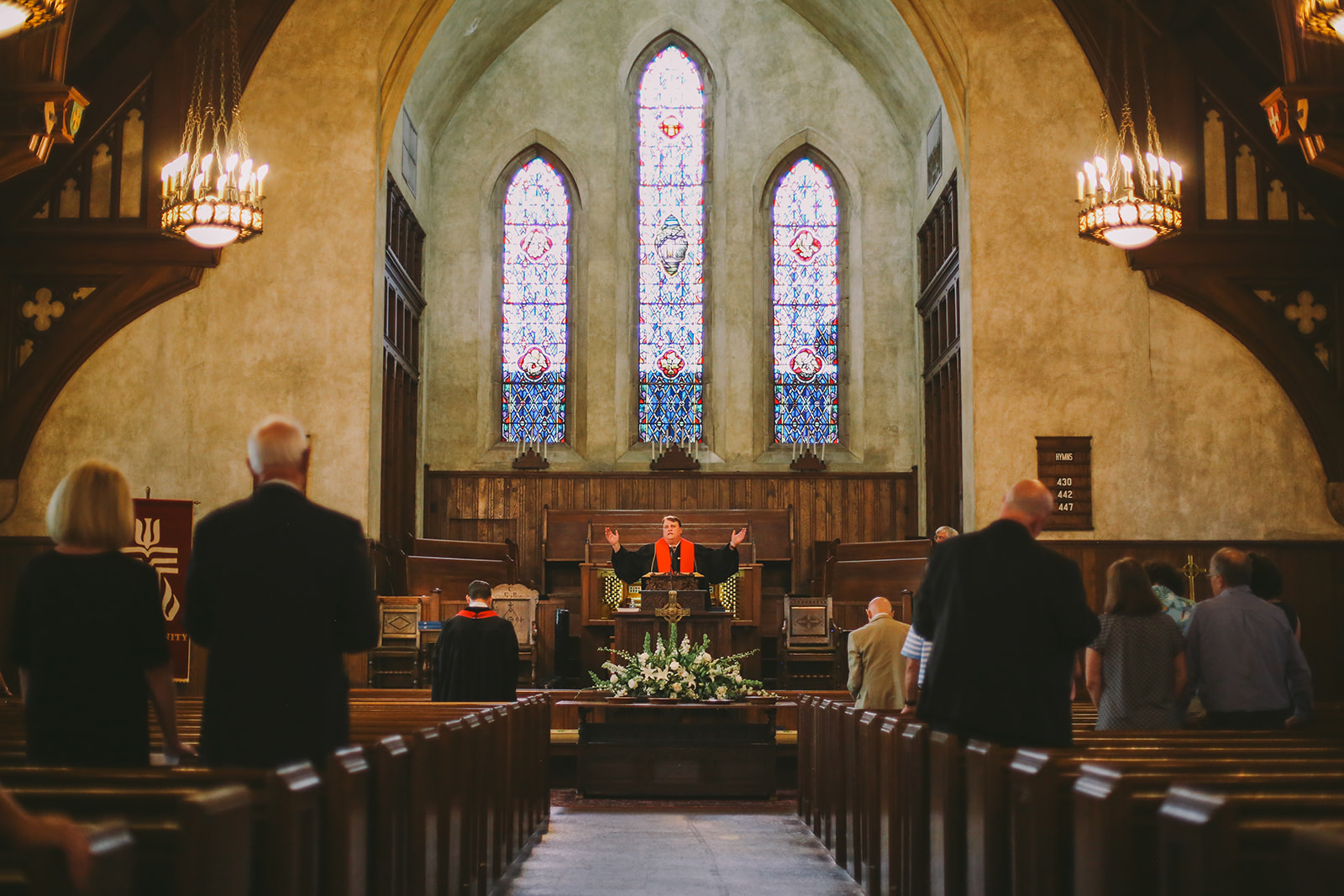First Trinity Presbyterian: Laurel’s Cathedral
“Mankind was never so happily inspired as when it made a cathedral.”
– Robert Louis Stevenson, An Inland Voyage
One might wonder how a diminutive Southern town would be blessed as the location of a small cathedral which is otherwise known as the First Trinity Presbyterian Church at the comer of Fifth Avenue and Fifth Street. Stevenson would undoubtedly be happily inspired by such a magnificent edifice that, along with the Lauren Rogers Museum of Art, St.
John’s Episcopal Church and numerous fine homes, combine to make up Laurel’s Historical District–which is really something special, particularly at azalea time in the spring.
Construction of the church began
$100,000 toward construction, and the church membership matched that donated amount within a few weeks. Mr. and Mrs. Wallace B.
Rogers, undertook the necessary research and sent members of the de Buys organization to Europe to study its cathedrals. The architecture of the church itself is 13th century Gothic, and the Kirk House, connected by a 72 foot tower, reflects the architecture of the 15th century. The church is built of gray-lavender and red South Carolina brick, and is covered with gray-green slate from Pennsylvania. The Kirk House has a flat roof and battlement parapets; flagstone walkways around the building match the roofing material.
The stained glass windows, a memorial to Lauren Eastman Rogers, are extremely valuable because of their rarity: double-rolled art glass imported from England.
The hardware is handwrought iron and the light fixtures are Gothic design. The cork tile flooring (from England and Wales) is underlaid with concrete.
All trim and fumiture is oak and the roof limbers and ceiling are brown-stained pine. The pew ends are carved in different designs, reflecting the carly days of the church when cach member made his own pew, took it to church and set it up himself.
That a high standard was set for church music was proved with the installation of a four manual organ which had 5 sections and 3,130 pipes. The instrument was built by the Austin Organ Co. of Hartford, Connecticut–probably the finest organ that could be purchased in 1924,
The original offering plates, hand carved in Icrusalem, were made from olive wood found in the Garden of Gethsemanc. On the ends of the hammer beams overhead are represented ten heraldic crosses.
The church is presently effective. y led by the Reverend Gregory Goodwiller. Extensive repairs and remodeling is in the last stages of completion and an appropriate dedication is planned for October 31.
A visit to Laurel’s Cathedral provides a visual delight. Superior acoustics enhance the experience of attending worship services there.
Long-time members can clearly recall the strong and rich baritone voice of Dr. Grayson L. Tucker, beloved pastor who served from 1917 until 1957, projected into the far reaches of the majestic sanctuary.In the late twentics Walter C.
Watkins, son of R. H. Watkins. legendary Superintendent of the Laurel City Schools, wrote extensively about the church. He com-mented: “But you must see the church for yourself to realize its beauty.”
There are many larger and most costly cathedrals in America. Sor reverence, quality. and excellent architectural details, it would be difficult to find one more impressive than this distinctive Presbyterian Chruch. Through years of effort loyalty, and dedication toward ideals by church members “mankind” of Laurel is happily inspired by this cathedral.
Maybe it was predestined!
By ERNEST GRAVES
Saturday, Sept. 18, 1993
Laurel-Leader Call


